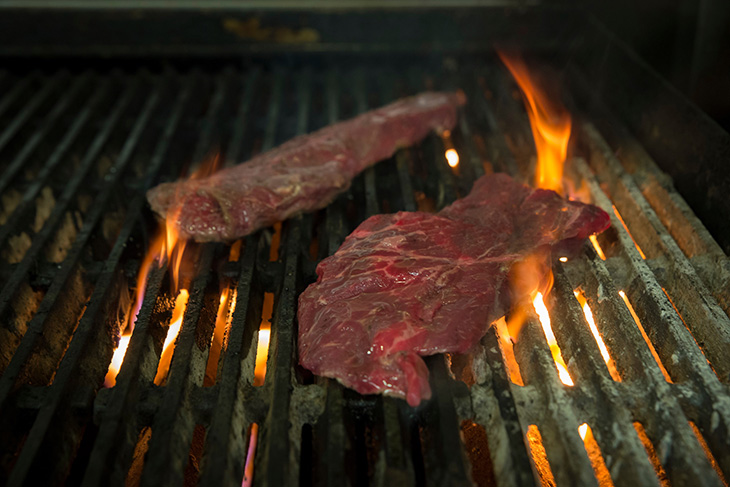
American beef exports struggling, imports remain steady
Thursday, December 12, 2019
Recently released data show a 4.2 percent year-over-year decrease in beef exports for the first 10 months of 2019, following three years of double-digit year-over-year growth in total beef exports.
“Beef exports were down 9 percent in October compared to last year, with 2019 beef exports to date declining in four of the top five U.S. beef export markets,” said Derrell Peel, Oklahoma State University Cooperative Extension livestock marketing specialist.
Total beef imports increased 2.7 percent year over year in October and are up 0.7 percent for the year to date, according to the U.S. Department of Agriculture.
Beef exports to Japan, the largest U.S. beef export destination, decreased 23.5 percent in October and are down 10.6 percent year over year so far in 2019. The United States has been at a significant tariff disadvantage in Japan after withdrawing from the Trans-Pacific Partnership agreement.
“The impacts of TPP, which took effect this year without the United States, have become increasingly apparent in recent months as beef exports to Japan have decreased year over year for the last eight months,” Peel said.
Peel added the bilateral trade deal between the United States and Japan that is scheduled to begin in 2020 will hopefully erase most of the tariff disadvantage America currently faces and will stop the erosion of beef market share in Japan.
Japan represents 26.7 percent of U.S. beef exports for the year to date in 2019.
South Korea is the second-largest beef export market and is up 7.4 percent for 2019 but declined 1.2 percent in October compared to one year ago. South Korea accounts for 22.8 percent of total U.S. beef exports thus far in 2019.
Mexico is the third-largest beef export market, as well as the third-largest source of U.S. beef imports. Beef exports to Mexico were down 11.5 percent in October and declined 3.5 percent for the year to date. Mexico accounts for 14.3 percent of beef exports thus far in 2019. Beef imports from Mexico were up 19.6 percent year over year in October and are up 14.1 percent for the year to date in 2019. Mexico currently accounts for 18.7 percent of U.S. beef imports this year.
Canada is the fourth-largest U.S. beef export market and is currently the largest beef import market. Beef exports to Canada decreased 4.5 percent in October compared to last year and are down 11.3 percent thus far in 2019. Canada represents 8.8 percent of beef exports for 2019. Beef imports from Canada increased 8.9 percent in October and are up 8 percent year over year for the first 10 months of 2019. Beef imports from Canada are 27.7 percent of total beef imports for the year to date.
Hong Kong, the fifth-largest beef export market, is down 11.1 percent year over year in October and down 27.5 percent for 2019. Hong Kong represents 6.9 percent of total beef exports. Close behind Hong Kong is Taiwan where beef exports decreased 8.7 percent in October but are up 7.8 percent for the year to date.
“Taiwan is the sixth-largest beef export market for U.S. beef and accounts for 6.5 percent of year-to-date exports,” Peel said. “Beef exports to the top six markets represent 86.1 percent of total beef exports through October in 2019.”
Australia is the second-largest beef import source for the United States, with imports down 7.1 percent in October and up 4.1 percent for the year to date. Australia accounts for 23.1 percent of American beef imports thus far in 2019.
New Zealand is the fourth-largest beef import market for American product, with October imports down 37.9 percent and year-to-date imports down 28.8 percent. New Zealand represents 14.5 percent of total U.S. beef imports.
“The top four beef import sources account for 84 percent of total imports, with Nicaragua adding another 5.5 percent and Brazil adding 5.2 percent,” Peel said.
Oklahoma is America’s second-leading producer of beef cows, according to USDA National Agricultural Statistics Service data.
The Oklahoma Cooperative Extension Service is one of two state agencies administered by OSU’s Division of Agricultural Sciences and Natural Resources, and is a key part of the university’s state and federally mandated teaching, research and Extension land-grant mission.
MEDIA CONTACT: Donald Stotts | Agricultural Communications Services | 405-744-4079 | donald.stotts@okstate.edu
